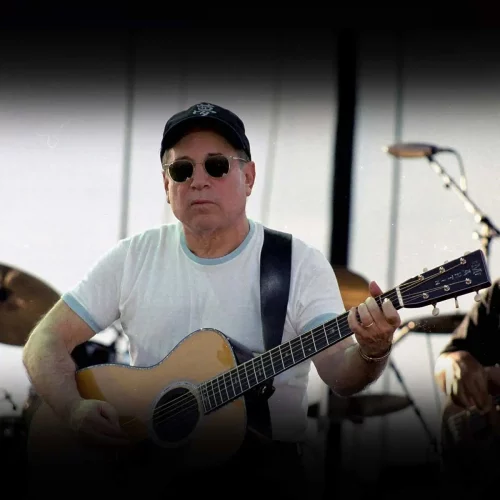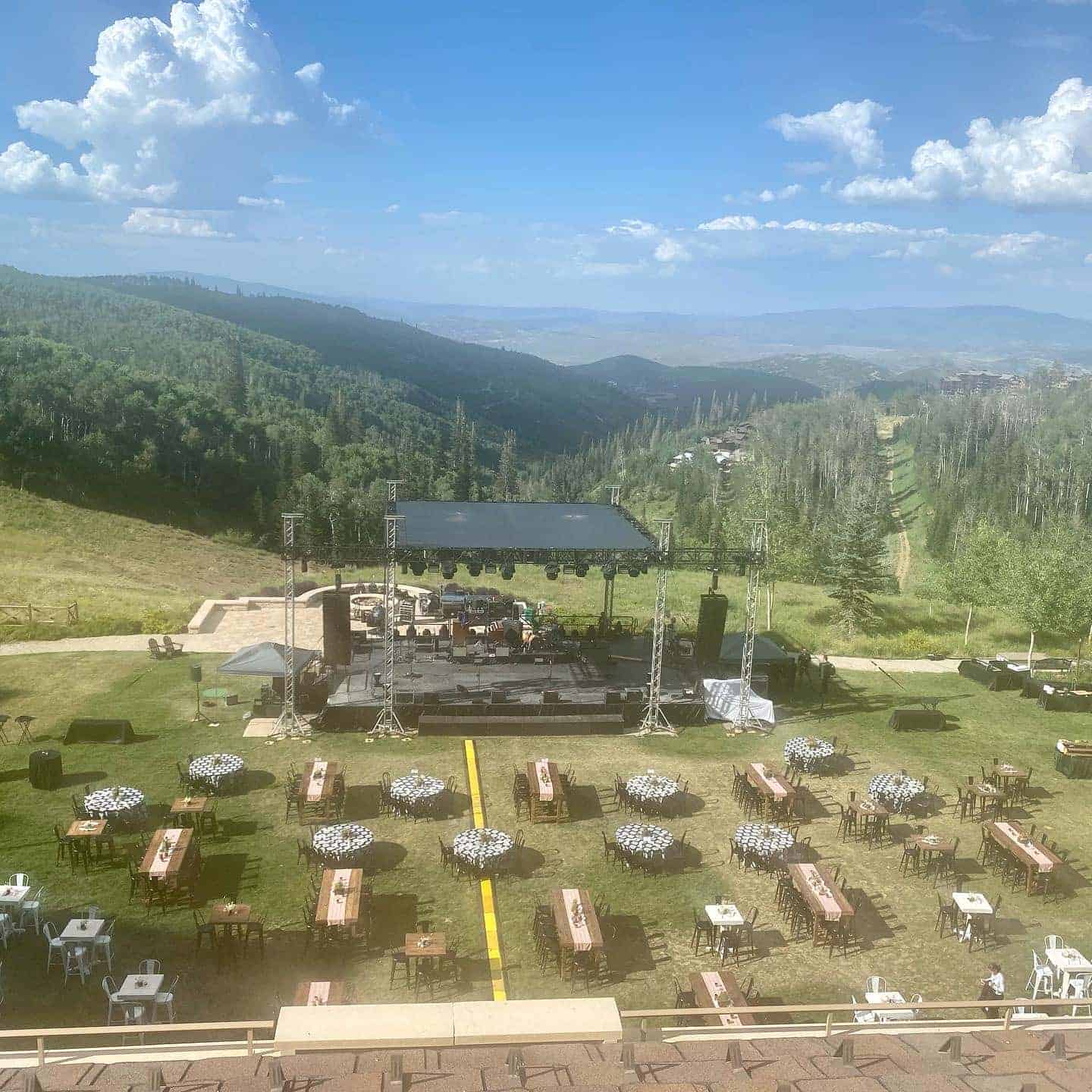Home - Artists - $750,000 + - Paul Simon
Book Paul Simon

Imagine Paul Simon Headlining Your Event!
The staff of Headline Booking Group will work with you to produce a flawless and memorable event. Get started now by filling out our no-obligation Artist Request Form.
Biography
Paul Simon Biography
🎤 Paul Simon
Legendary Singer-Songwriter and Musical Innovator
Paul Simon is an American singer-songwriter renowned both as a solo artist and as part of the legendary duo Simon & Garfunkel. With a career spanning over six decades, Simon has created a rich and influential body of work blending folk, rock, pop, and world music.
🌟 About Paul Simon
Born October 13, 1941, in Newark, New Jersey, Paul Frederic Simon first gained fame alongside Art Garfunkel as Simon & Garfunkel, producing timeless hits like "The Sound of Silence" and "Bridge Over Troubled Water." After the duo split in 1970, Simon embarked on a prolific solo career, delivering groundbreaking albums such as Graceland and Still Crazy After All These Years. Known for deeply poetic lyrics and innovative melodies, Simon remains a significant cultural figure.
🎶 Genres & Style
-
Folk Rock
-
World Music
-
Pop
-
Soft Rock
Simon's music is celebrated for its lyrical depth, melodic creativity, and seamless integration of diverse global influences, making him one of the most versatile and respected musicians of his time.
🏆 Notable Achievements
-
16 Grammy Awards, including Album of the Year (Graceland, Still Crazy After All These Years) (Grammy.com)
-
Twice inducted into the Rock and Roll Hall of Fame (1990 as Simon & Garfunkel; 2001 as solo artist) (Rockhall.com)
-
Kennedy Center Honors recipient in 2002 (Kennedy-Center.org)
-
Awarded the Gershwin Prize for Popular Song in 2007 by the Library of Congress (LOC.gov)
🎧 Hit Songs
-
"The Sound of Silence" – An iconic track exploring isolation and connection
-
"Bridge Over Troubled Water" – One of the most beloved ballads of all time
-
"Graceland" – A groundbreaking album and title track blending American and African musical styles
-
"You Can Call Me Al" – Known for its lively beat and memorable video featuring Chevy Chase
-
"50 Ways to Leave Your Lover" – Famous for its clever lyrics and catchy percussion
🎥 Watch & Listen
📺 YouTube
Explore Paul Simon performances on YouTube:
🎧 Spotify
Listen to Paul Simon on Spotify
📸 Images
Browse images of Paul Simon:
💡 Booking Appeal
Paul Simon's legendary songwriting and distinctive performances make him an ideal choice for:
-
Music Festivals
-
Charity Galas
-
Corporate Events
-
Cultural Celebrations
-
Private Concerts
🎤 Quote to Remember
“Music is forever; music should grow and mature with you, following you right on up until you die.” – Paul Simon
✨ Book Paul Simon for an unforgettable event filled with musical innovation, heartfelt storytelling, and timeless classics.
🎤 Paul Simon
Legendary Singer-Songwriter and Musical Innovator
Paul Simon is an American singer-songwriter renowned both as a solo artist and as part of the legendary duo Simon & Garfunkel. With a career spanning over six decades, Simon has created a rich and influential body of work blending folk, rock, pop, and world music.
🌟 About Paul Simon
Born October 13, 1941, in Newark, New Jersey, Paul Frederic Simon first gained fame alongside Art Garfunkel as Simon & Garfunkel, producing timeless hits like “The Sound of Silence” and “Bridge Over Troubled Water.” After the duo split in 1970, Simon embarked on a prolific solo career, delivering groundbreaking albums such as Graceland and Still Crazy After All These Years. Known for deeply poetic lyrics and innovative melodies, Simon remains a significant cultural figure.
🎶 Genres & Style
-
Folk Rock
-
World Music
-
Pop
-
Soft Rock
Simon’s music is celebrated for its lyrical depth, melodic creativity, and seamless integration of diverse global influences, making him one of the most versatile and respected musicians of his time.
🏆 Notable Achievements
-
16 Grammy Awards, including Album of the Year (Graceland, Still Crazy After All These Years) (Grammy.com)
-
Twice inducted into the Rock and Roll Hall of Fame (1990 as Simon & Garfunkel; 2001 as solo artist) (Rockhall.com)
-
Kennedy Center Honors recipient in 2002 (Kennedy-Center.org)
-
Awarded the Gershwin Prize for Popular Song in 2007 by the Library of Congress (LOC.gov)
🎧 Hit Songs
-
“The Sound of Silence” – An iconic track exploring isolation and connection
-
“Bridge Over Troubled Water” – One of the most beloved ballads of all time
-
“Graceland” – A groundbreaking album and title track blending American and African musical styles
-
“You Can Call Me Al” – Known for its lively beat and memorable video featuring Chevy Chase
-
“50 Ways to Leave Your Lover” – Famous for its clever lyrics and catchy percussion
🎥 Watch & Listen
📺 YouTube
Explore Paul Simon performances on YouTube:
🎧 Spotify
Listen to Paul Simon on Spotify
📸 Images
Browse images of Paul Simon:
💡 Booking Appeal
Paul Simon’s legendary songwriting and distinctive performances make him an ideal choice for:
-
Music Festivals
-
Charity Galas
-
Corporate Events
-
Cultural Celebrations
-
Private Concerts
🎤 Quote to Remember
“Music is forever; music should grow and mature with you, following you right on up until you die.” – Paul Simon
✨ Book Paul Simon for an unforgettable event filled with musical innovation, heartfelt storytelling, and timeless classics.
Expand Full Bio
Paul Simon’s Biography
One of the most paradoxical figures in rock-and-roll history, Simon exemplified many of the principles against which the music initially reacted. From his first big hit, The Sounds of Silence, in 1965, Simon aspired to a self-consciously elevated poetic tone in his lyric writing that was the antithesis of rock-and-roll spontaneity.
As a teenager Simon teamed up with his classmate from Queens, New York, Art Garfunkel, to form Simon and Garfunkel (first known as Tom and Jerry). Beginning with The Sounds of Silence, they were the most popular folk-pop duo of the 1960s and the musical darlings of literary-minded college-age baby boomers. In 1967 their music was a key ingredient in the success of the hit film The Graduate, and in 1970 they reached their zenith with Simon's inspirational gospel-flavoured anthem Bridge over Troubled Water, which showcased Garfunkel's soaring, semioperatic tenor. Simon's best narrative song from this period, The Boxer (1969), is the streamlined dramatic monologue of a down-and-out prizefighter.
Simon's fascination with pop vocal sound quickly expanded to include the sparkle of English folk music, the ethereal pipes and voices of Andean mountain music, and the arching passion of gospel. After he and Garfunkel broke up in 1970, his biggest solo success came in 1975 with Still Crazy After All These Years, a collection of wistful ruminations on approaching middle age.
When his popularity began to ebb, Simon jumped on the emerging world-music bandwagon. On a visit to South Africa, he met many of the musicians with whom he made Graceland (1986), an exquisite, multifaceted fusion of his own sophisticated stream-of-consciousness poetry with black South Africa's doo-wop-influenced township jive and Zulu choral music, the album was one of the most critically acclaimed and commercially successful of the decade and helped put South African music on the world stage.
Among songwriters of his generation, Simon enjoyed one of the longest-lasting careers as a pop innovator. Searching out and exploring the sounds of indigenous musical cultures, from Southern gospel to Brazilian and West African percussion, he integrated them into American rock and folk styles to create a highly flexible, personalized style of world music that was at once primitive and elegant. Simon was inducted into the Rock and Roll Hall of Fame in 2001.
Paul Simon’s Biography
One of the most paradoxical figures in rock-and-roll history, Simon exemplified many of the principles against which the music initially reacted. From his first big hit, The Sounds of Silence, in 1965, Simon aspired to a self-consciously elevated poetic tone in his lyric writing that was the antithesis of rock-and-roll spontaneity.
As a teenager Simon teamed up with his classmate from Queens, New York, Art Garfunkel, to form Simon and Garfunkel (first known as Tom and Jerry). Beginning with The Sounds of Silence, they were the most popular folk-pop duo of the 1960s and the musical darlings of literary-minded college-age baby boomers. In 1967 their music was a key ingredient in the success of the hit film The Graduate, and in 1970 they reached their zenith with Simon’s inspirational gospel-flavoured anthem Bridge over Troubled Water, which showcased Garfunkel’s soaring, semioperatic tenor. Simon’s best narrative song from this period, The Boxer (1969), is the streamlined dramatic monologue of a down-and-out prizefighter.
Simon’s fascination with pop vocal sound quickly expanded to include the sparkle of English folk music, the ethereal pipes and voices of Andean mountain music, and the arching passion of gospel. After he and Garfunkel broke up in 1970, his biggest solo success came in 1975 with Still Crazy After All These Years, a collection of wistful ruminations on approaching middle age.
When his popularity began to ebb, Simon jumped on the emerging world-music bandwagon. On a visit to South Africa, he met many of the musicians with whom he made Graceland (1986), an exquisite, multifaceted fusion of his own sophisticated stream-of-consciousness poetry with black South Africa’s doo-wop-influenced township jive and Zulu choral music, the album was one of the most critically acclaimed and commercially successful of the decade and helped put South African music on the world stage.
Among songwriters of his generation, Simon enjoyed one of the longest-lasting careers as a pop innovator. Searching out and exploring the sounds of indigenous musical cultures, from Southern gospel to Brazilian and West African percussion, he integrated them into American rock and folk styles to create a highly flexible, personalized style of world music that was at once primitive and elegant. Simon was inducted into the Rock and Roll Hall of Fame in 2001.
Paul Simon Booking Request Form
Please fill out the form below. One of our booking agents will contact you within 24 hours to discuss your event in greater detail.
Our Services Include

Comprehensive needs assessment

Contacting and negotiating with celebrity talent representation


Serving as a liaison between your staff and the artist ensuring a flawless performance

You also might like

Adult Contemporary

Adult Contemporary

Adult Contemporary

Adult Contemporary

Adult Contemporary

Adult Contemporary

Adult Contemporary

Adult Contemporary

Adult Contemporary

Adult Contemporary
The Headline Booking Promise
At Headline Booking, we deliver unforgettable celebrity entertainment performances for private parties that create lasting impressions and lifelong memories. Our promise is a Gold Standard of service, so you can relax and enjoy the show while trusting that every detail will be executed flawlessly. When you choose Headline Booking, we provide:
Booking of your favorite A-list artist to perform at your private event
Contracting with the artist and coordination of all Artist travel logistics
Our staff to advance all details with you specific to your event
A professional on-site production team overseeing all concert details delivering a seamless experience to be enjoyed by all
